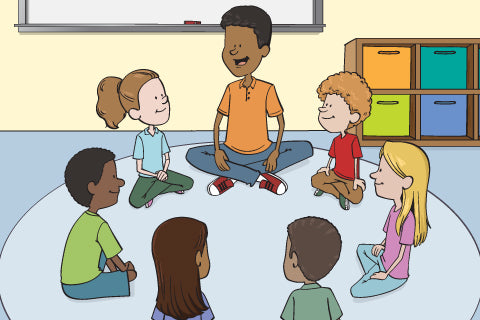Prevention Best Practice
Blog · Jul 16, 2025

The Power of Early Prevention in Building Resistance to Substance Use
Preventing substance use before it starts is one of the most effective ways to promote lifelong health and resilience in young people. Early prevention education plays a crucial role in establishing healthy social and behavioral norms that serve as a strong protective barrier against substance use.
Establishing Healthy Norms and Expectations
By reaching children and adolescents before they are exposed to drugs, alcohol, and other substances, prevention programs shape attitudes, beliefs, and behaviors that significantly reduce the likelihood of future substance abuse. Early prevention efforts are most effective when they are developmentally appropriate, culturally relevant, and sustained across different environments such as home, school, and community.
At its core, prevention education focuses on equipping young people with knowledge about the health risks of substance use while also strengthening their self-efficacy and interpersonal skills. It teaches children how to set reachable goals, manage stress, make responsible decisions, resist peer pressure, and build healthy relationships. These skills are essential for fostering resilience—the ability to navigate challenges without turning to harmful coping mechanisms like drug or alcohol use.
A central strategy in early prevention education is to set clear and consistent expectations regarding the effects of substance use on the body, mind, social life, and academics. When children are taught from an early age that drug and alcohol use is not acceptable or safe—especially during adolescence—they internalize these values as part of their social norms. This helps create an environment in which abstaining from substance use is the standard, not the exception. These norms are further reinforced when parents, teachers, and community leaders model and uphold the same expectations.
Strengthening Protective Factors to Mitigate Risk
Moreover, early education builds protection to mitigate risk factors associated with substance use. These risk factors include poor academic performance, low self-esteem, family history of addiction, exposure to substance use in the household or media, and lack of parental supervision. Prevention programs that address these factors head-on—by promoting academic engagement, strengthening family bonds, and encouraging positive peer associations—can significantly reduce a child’s vulnerability to substance use later in life.
Protective factors include strong social connections, a sense of purpose, clear rules and consequences, and involvement in positive activities such as sports or clubs. Promoting these elements through prevention education helps children build a lifestyle that naturally steers them away from risky behaviors. For instance, a student who feels valued at school and supported by peers is less likely to seek comfort or identity through substance use.
Long-Term Impact and Community Commitment
Early prevention lays the groundwork for healthy development across a child’s lifespan. The habits, attitudes, and coping mechanisms formed during childhood tend to persist into adulthood. Therefore, starting prevention efforts early can have long-lasting effects, reducing not only the risk of substance use during adolescence but also the likelihood of developing substance use disorders later in life.
Early prevention education is a powerful tool for shaping the future well-being of children and adolescents. By establishing healthy norms and expectations, and by building the skills and supports that foster resilience, these programs serve as a frontline defense against the numerous risk factors that contribute to substance use. Investing in early education is not just a strategy for prevention—it’s a commitment to healthier individuals, families, and communities.